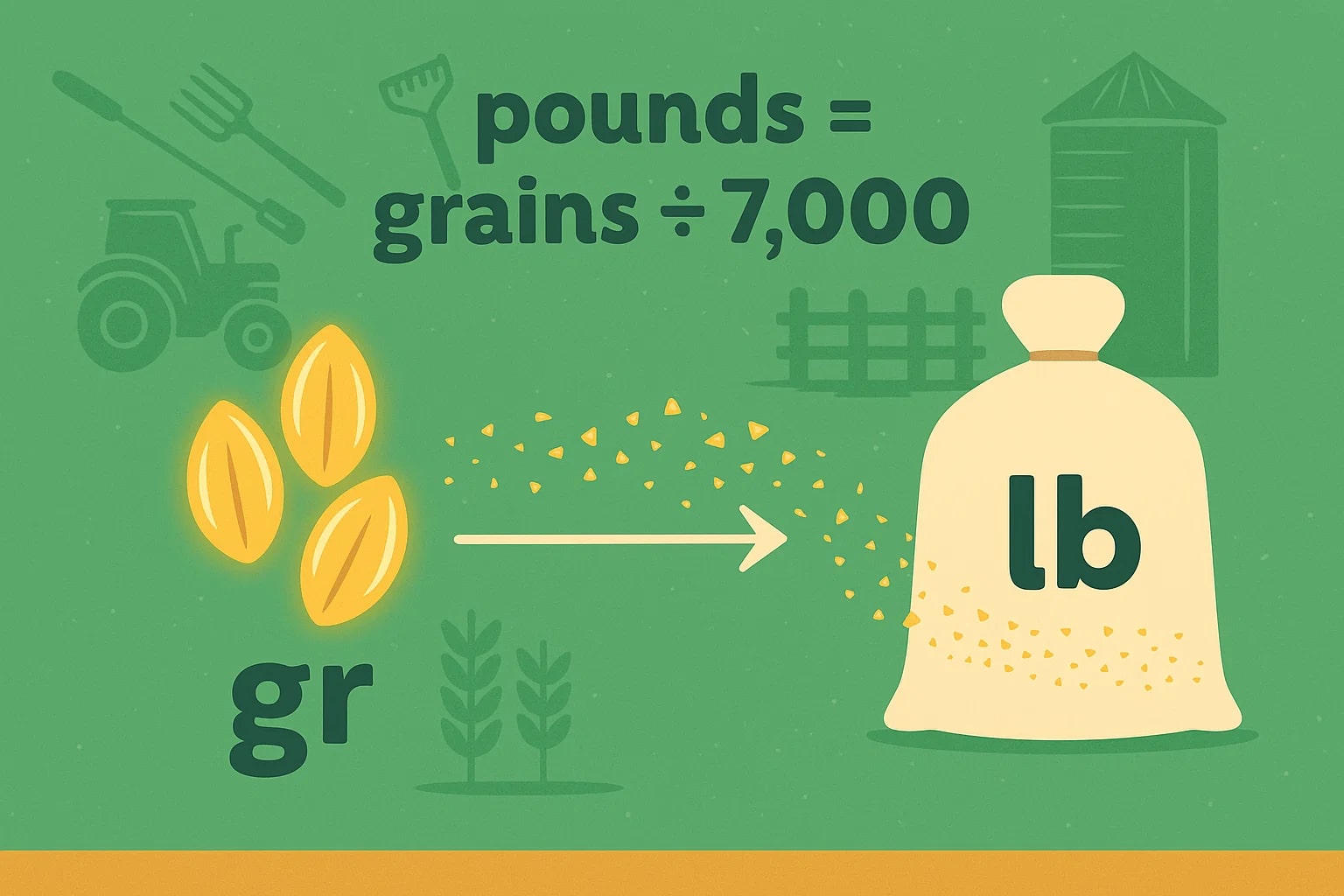grain to pound – How to convert gr to lb
The grain to pound conversion connects one of the smallest traditional weight units with one of the largest everyday trade measures. From agriculture to manufacturing, knowing how to switch between gr and lb ensures accuracy in both micro-scale and bulk operations.
What is a Grain (gr)?
A grain is an ancient unit of mass, historically based on the weight of a barley seed.1 gr = 0.0001428571 lb (avoirdupois)
It’s still used today for measuring seeds, ammunition, precious metals, and other items where extreme precision matters.
What is a Pound (lb)?
A pound is a much larger unit of mass used in the avoirdupois system, especially in the U.S.1 lb = 7 000 gr
Pounds are the standard for shipping, trade, and most large-scale measurements, while grains are reserved for fine detail.
How to convert grain to pound
The formula is simple:
pounds = grains ÷ 7 000
Example: 14 000 gr of wheat equals 14 000 ÷ 7 000 = 2 lb.
The reverse conversion is:
grains = pounds × 7 000
Example: 0.5 lb of barley equals 0.5 × 7 000 = 3 500 gr.

For grain-to-pound conversions and beyond, the Weight Converter keeps calculations quick. Explore other measurement types through our Conversion Tools.
Do you know?
-
Grain fact: In precision agriculture, the average weight of a single corn kernel can range from 250–300 grains — a key factor in determining planting density.
-
Pound fact: The modern pound evolved from Roman and medieval trade systems, and its exact grain count was standardized in the 14th century in England.
The Precision Agriculture Farm: Counting Every Grain
On a modern Midwest farm, the days of planting “by eye” are long gone. Today’s high-tech planters are equipped with sensors that measure the weight of seeds in grains to calculate how many to drop per acre. A difference of just a few grains per seed can affect germination rates, crop spacing, and overall yield.
Once harvest time comes, the story shifts to pounds. Grain elevators, shipping companies, and buyers record bulk quantities in pounds — often tens or hundreds of thousands at a time. This means the farm’s data must flow seamlessly from tiny grain-level precision to large-scale pound reporting.
One farm manager recalls a year when a new seed variety was mislabeled in the supplier’s catalog. The average seed weight listed was off by just 5 grains, but when scaled up across hundreds of acres, it threw the yield estimates off by thousands of pounds. After double-checking the grain-to-pound conversions, the team corrected the planting rate for the next season, restoring both yield and profit.
In this world, grain to pound conversion isn’t just math — it’s the bridge between microscopic detail and global-scale trade.

Scaling from Seed to Shipment
The grain and the pound sit at opposite ends of the weight spectrum, but they work hand in hand in modern industries. From planting precision seeds to weighing full harvests, getting the conversion right ensures efficiency, fairness, and profitability. Whether you’re measuring a single kernel or a truckload of wheat, every pound starts with grains — and every grain counts.

